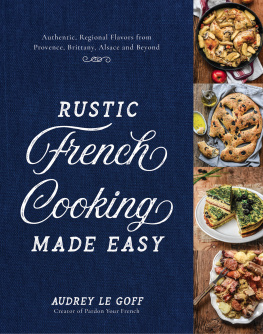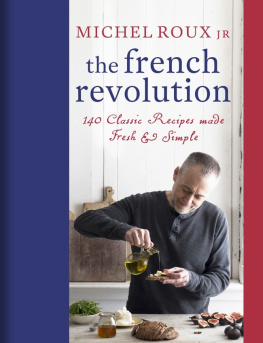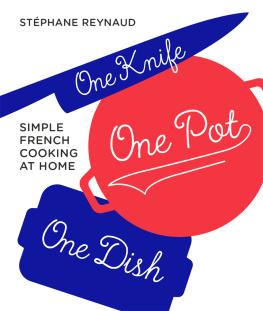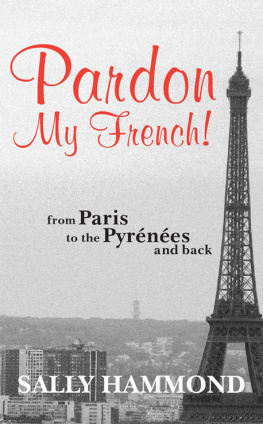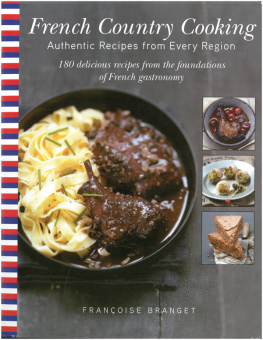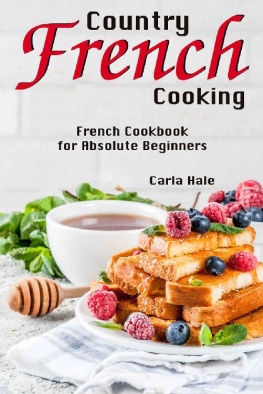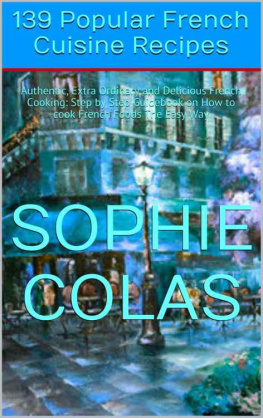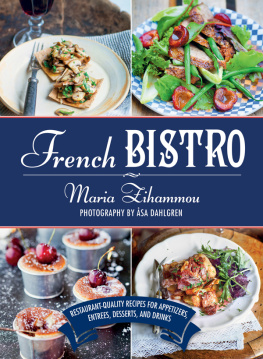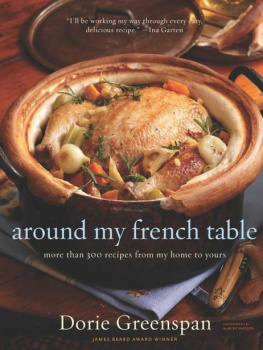RUSTIC
French
Cooking
MADE EASY
Authentic, Regional Flavors from
Provence, Brittany, Alsace and Beyond
AUDREY LE GOFF
Creator of Pardon Your French

To my beloved France.
The author and publisher have provided this e-book to you for your personal use only. You may not make this e-book publicly available in any way. Copyright infringement is against the law. If you believe the copy of this e-book you are reading infringes on the authors copyright, please notify the publisher at: http://us.macmillanusa.com/piracy.

I was born and raised in Brittany, on the northwestern Atlantic coast of France. My favorite meals wereand well, still arebuckwheat crpes filled with andouillette (tripe sausage) with a glass of fermented milk, pungent fish soup with crusty croutons, fresh periwinkles on rye bread with salted butter, craggy apple flans and butter-oozing . In other words, a far stretch from what French cuisine is usually known for, outside of France.
As a child, I was lucky enough to travel throughout France with my family. We spent cold December holidays in eastern Alsace, eating billowy yeasted cakes (. The ducks of Dordogne, the sausages of Toulouse, the sweet lemons of Corsica, the creamy cheeses of Normandy we did that too.
For university, I moved to Rennes in central Brittany, where my love for buckwheat crpes and buttery treats only grew stronger. I then moved to Lyon, often considered the worlds food capital, where I found a whole new world of fine delicatessen meats, cheese spreads () and nut-centric desserts. Later on, I fell in love with Provence and its generous, Mediterranean cuisine. And not so long ago, I discovered the Hauts-de-France at the northern tip of the country, with its heart-warming Flemish beer-infused dishes and sugary treats.
So, as I settled in Canada ten years ago, you can imagine my surprise to see how French cuisine was mostly defined by croissants, only a few sophisticated recipes and a strict and unapproachable cooking style. I realized the canon of French cuisine was in fact as much admired in the rest of the world as it was intimidating. What a contrast from the jolly and unfussy French cuisine I grew up with, the one that had shaped my life.
Since then, I have had an itch to show the world how simple, humble and incredibly diverse French cuisine really isfrom a simple French home cook like me, from my little piece of the French countryside.
I wrote this book to show you regional French cuisine, with its rich history and varied ingredients, is tremendously exciting and anything but uniform. I wanted to share a collection of recipes that are authentic and accessible to any home cook, wherever you are in the world. To me, and to many other French people, the heart of French cooking is in home kitchens, and not in fancy restaurants.
This book is a love letter to France, to my passion and appetite for it; to Frances regions that are so diverse yet bound by the same love for good food and hospitality; to all these wonderful recipes that deserve to be known, shared and passed on.
Enjoy, and Bon Apptit!


Laproshort for lapritif, or whats known as the French evening prayer is a pre-meal ritual involving a few drinks and some finger foods. It is a most cherished interlude in the days activitiesa moment of conviviality, which is so dear to the French. You might think of it as happy hour, but for the French, it is a sacred and a quintessential part of social culture. Taking part in this evening ritual perpetuates a feeling of belonging. The food and drink is an added bonus.
While Americans are aficionados of mixed cocktails, the French would rather reach for their locally-produced spirits and liqueurs, which French regions are rich with. But, I feel the real pleasure of it all exists in the delicacies each regional table provides. In Lyon, while in university, I discovered the pleasures of Cervelle de Canut () and a glass of ros wine are my go-to.
Simplicity and lack of fuss are always prevalentthe simpler the better. An apro is all about whetting the appetite and getting the conversation flowing.

Breads with all sorts of garnishes are a star of the French apro and this Prfou, a specialty from Vende in west-central France, is undeniably one of my favorites. It is a succulent ode to simplicity, a humble bread garnished with a flavor-packed garlic and parsley compound butter.
Its said Vende bakers used to test the heat of their ovens by throwing a handful of dough inside and watching it bake. The barely baked buns would then be eaten with a slab of parsley butter, giving birth to this local specialty. You can now find premade prfous in most grocery stores and bakeries in Vende, and it is amazingly simple to make at home as well.
When buying the baguette for this recipe, I choose one that is slightly under-baked as it will crisp up and brown in the oven for an additional fifteen minutes.
SERVES 6 TO 8
1 cup (225 g) unsalted butter, at room temperature
1 bunch of flat-leaf parsley, stemmed and finely chopped
4 cloves garlic, peeled, desprouted and minced
tsp salt
tsp fresh ground black pepper
1 baguette
Preheat your oven to 350F (180C, or gas mark 4), with a rack in the middle.
In a bowl, using a fork or a rubber spatula, cream together the butter, parsley, garlic, salt and ground pepper.
Lay the baguette on a parchment-lined baking sheet.
With a serrated bread knife, cut 1-inch (2.5-cm)-thick slices all along the baguette, making sure not to cut through the bread all the way. Generously spread parsley butter in between each cut.
Bake for 15 minutes. Serve immediately, tearing each slice to separate.

In Marseille, people dont normally nosh on potato chips before dinner. Instead they enjoy crispy Chickpea Flour Fries called panisses. Chickpea flour mixed with water is the base of this Provenal street food. In Nicewhere it is called Soccaand in Toulonwhere it is called Cadethis simple mixture is spread thin like a galette and baked in a wood-fire oven. In Marseille, it is cut into circles or sticks and panfried right before serving. Crisp on the outside, creamy on the inside, panisses are often enjoyed on their own with a sprinkle of salt, pepper or dried herbs.

